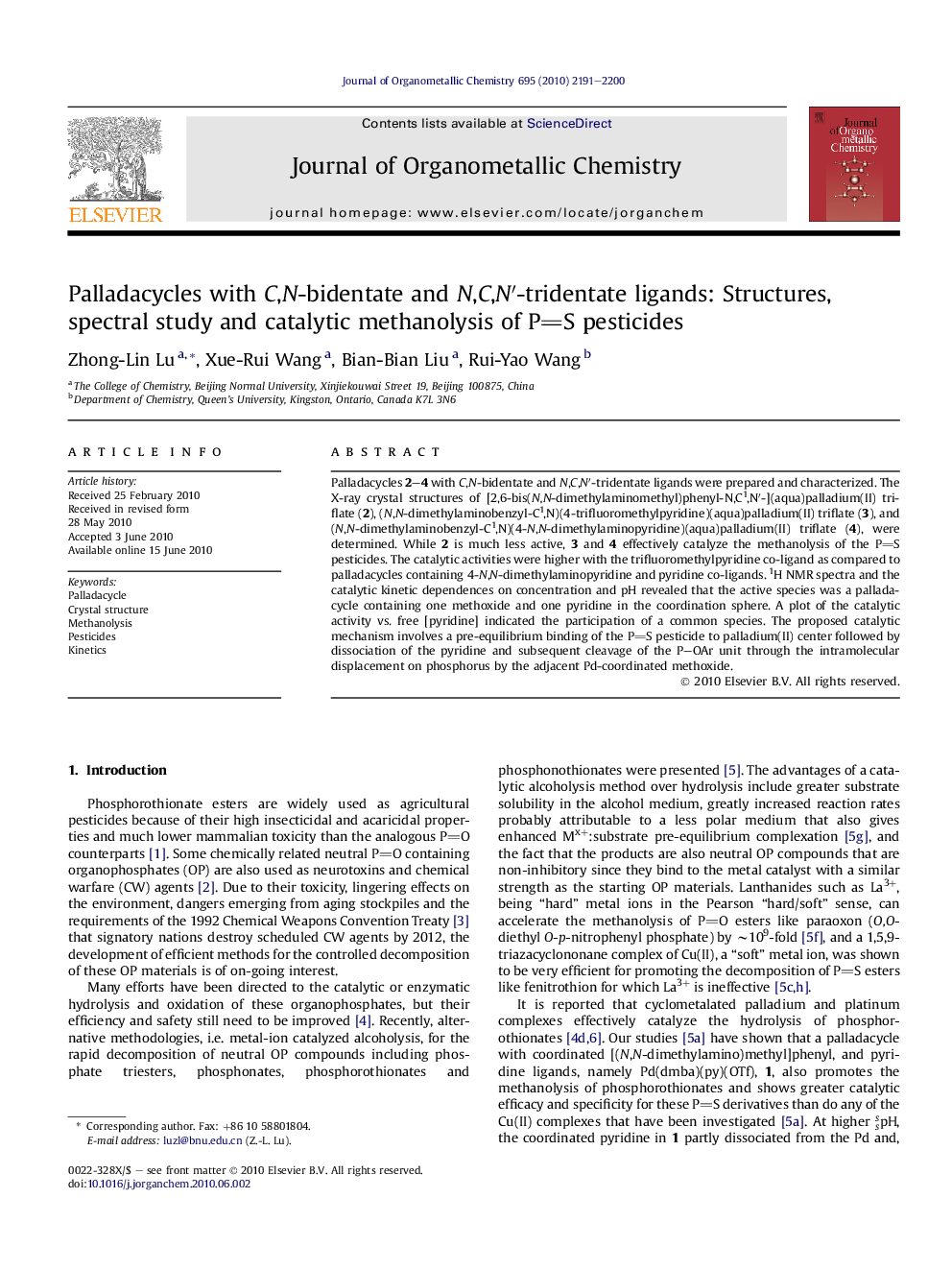| Article ID | Journal | Published Year | Pages | File Type |
|---|---|---|---|---|
| 1324055 | Journal of Organometallic Chemistry | 2010 | 10 Pages |
Palladacycles 2–4 with C,N-bidentate and N,C,N′-tridentate ligands were prepared and characterized. The X-ray crystal structures of [2,6-bis(N,N-dimethylaminomethyl)phenyl-N,C1,N′-](aqua)palladium(II) triflate (2), (N,N-dimethylaminobenzyl-C1,N)(4-trifluoromethylpyridine)(aqua)palladium(II) triflate (3), and (N,N-dimethylaminobenzyl-C1,N)(4-N,N-dimethylaminopyridine)(aqua)palladium(II) triflate (4), were determined. While 2 is much less active, 3 and 4 effectively catalyze the methanolysis of the PS pesticides. The catalytic activities were higher with the trifluoromethylpyridine co-ligand as compared to palladacycles containing 4-N,N-dimethylaminopyridine and pyridine co-ligands. 1H NMR spectra and the catalytic kinetic dependences on concentration and pH revealed that the active species was a palladacycle containing one methoxide and one pyridine in the coordination sphere. A plot of the catalytic activity vs. free [pyridine] indicated the participation of a common species. The proposed catalytic mechanism involves a pre-equilibrium binding of the PS pesticide to palladium(II) center followed by dissociation of the pyridine and subsequent cleavage of the P–OAr unit through the intramolecular displacement on phosphorus by the adjacent Pd-coordinated methoxide.
Graphical abstractPalladacycles with C,N-bidentate and N,C,N′-tridentate ligands have been prepared and structurally characterized. Their catalytic proficiencies in promoting the methanolysis of phosphorothionates were studied in detail.Figure optionsDownload full-size imageDownload as PowerPoint slide
